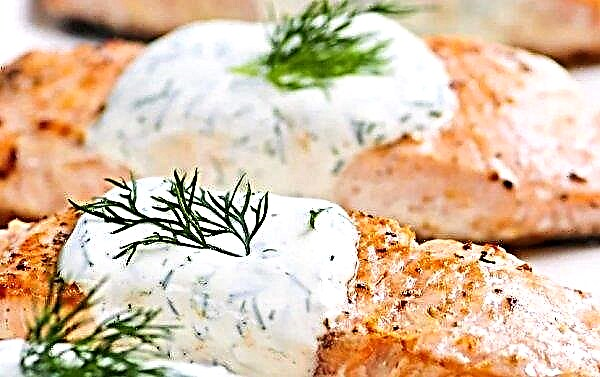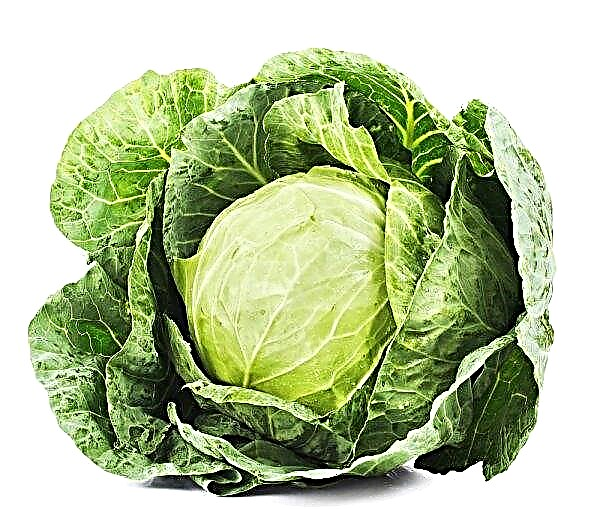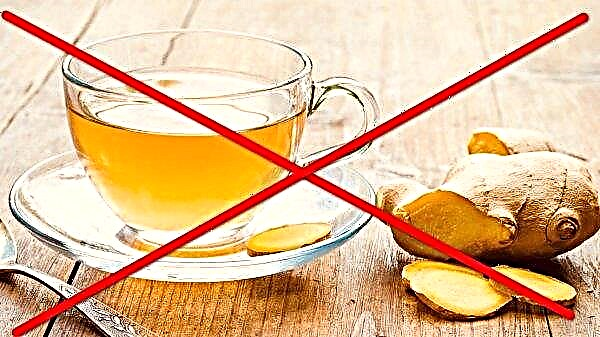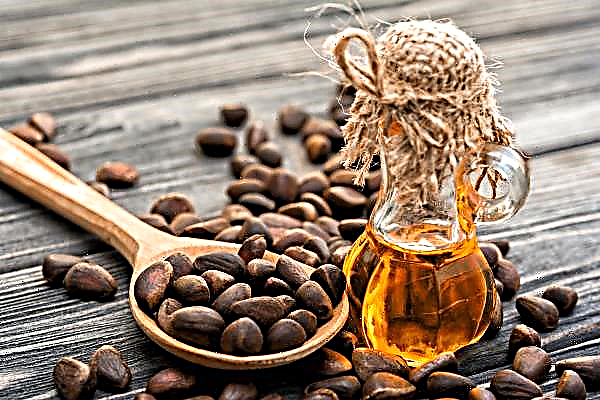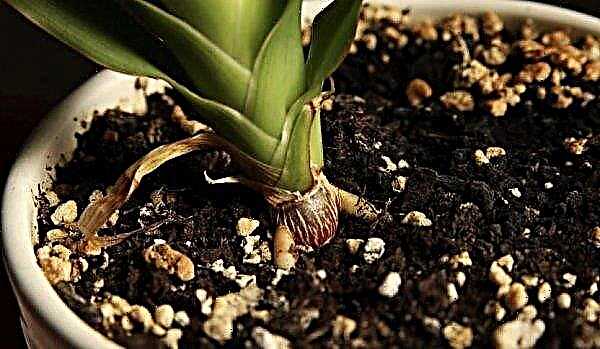Chum salmon caviar is a tasty, healthy and satisfying delicacy, which is loved by both adult gourmets and children. To be sure of the quality of the product and its freshness, professional chefs advise to salt it on their own at home. Find out how salting of keto raw materials is carried out correctly, where and how to preserve it - learn from the article.
Selection and preparation of ingredients
In order to cook tasty and healthy caviar at home, first of all, you need to purchase a quality carcass of fish.
As you know, the eggs are found only in the female, so during the purchase of the product you need to pay attention to such aspects:
- the female has a small round head and smooth, soft outlines of the body, while males differ in a pointed, more predatory head;
- the color of the female chum salmon is lighter than that of the male;
- chum salmon meat should be saturated bright pink;
- fish eyes should be shiny, without a cloudy tint;
- the product should emit the usual smell of fish, without any admixtures of ammonia or rottenness.
Important! Quite often, unscrupulous sellers try to give out the carcass of pink salmon as a chum salmon. When choosing the latter, experts advise looking at the fins - there should be no dark spots on them. In addition, chum salmon are much larger than pink salmon.
Before salting, it is necessary to extract eggs from the belly. You can use both fresh (chilled) fish and completely frozen. Having pulled the raw material from the belly, it must be freed from the pail - a special bag in which the main ingredient is stored.

For this:
- Place the caviar on any container, pour warm water, the temperature of which is about + 80 ° С. To sustain 2-3 minutes;
- put caviar in a colander, drain the water. Under the influence of high temperatures, the film of the oyster curls up and is easily separated from the eggs.
Did you know? There are several types of red caviar: chum salmon, pink salmon, sockeye salmon, sims, coho salmon. The keto product is the largest: the size of one egg reaches 5 mm.
Methods for salting chum salmon caviar
Chum salmon caviar is a magnificent, refined ingredient for making sandwiches, which can become a real highlight of any festive table. This product does not belong to the category of cheap, however, independent salting allows to significantly reduce its cost. The simplest and most popular step-by-step recipes for salting red caviar at home are presented later in the article.
Classic recipe in brine

300 g30 minutes
keto raw materials
of two fish (250-300 g)
clean, filtered water
250 ml
Nutritional value per 100 g:
- Prepare caviar, put in a container.
- Make brine (marinade): dissolve salt and sugar in warm water.
- Pour caviar with brine so that the liquid completely covers it. Leave on for 20 minutes.
- After the specified time, discard the eggs on a sieve and allow to dry.
- After 2-3 hours, when the product dries, transfer to glass containers that are sterilized, greased with vegetable or olive oil.
- After 3 hours, the delicacy is ready to eat.

Did you know? Only from the end of the 19th century did caviar begin to be considered a delicacy and salted with the usual method. Prior to this, the peoples of Sakhalin and Kamchatka simply threw away raw materials along with the entrails of the fish.
Five minute

280-300 g40 minutes
caviar raw materials
of two fish
Nutritional value per 100 g:
- Make brine: boil water, add salt, mix thoroughly until crystals are completely dissolved.
- Extract caviar from the carcass of the fish.
- Pour the main ingredient with brine and let stand for 4 minutes.
- Discard raw materials on gauze or colander, free from film.
- Pour the marinade over the product again for 30 seconds.
- Discard caviar on a sieve, dry a little, and you can use the "five-minute".

In spicy pickle

500 g130 minutes
bulb
1 medium-sized piece
black pepper peas
4-6 pieces
Nutritional value per 100 g:
- Rinse caviar obtained from chum salmon and dry on a towel.
- Prepare the brine: completely dissolve the salt in 500 ml of water.
- Cooked marinade pour caviar, leave for 2 hours.
- After the required time, drain the brine.
- Make a new brine: add vinegar to 500 ml of water, add salt to taste.
- Pour raw marinade over 10 minutes. Drain.
- Lay the chopped onion, peppercorns, bay leaf and rings on top of the caviar. Sprinkle with sugar. Close the container tightly with a lid, send the container to the refrigerator for 48 hours.

Important! If it is necessary to obtain a more salty product, then it is recommended to add it before sending it to the refrigerator. If the taste suits, the raw materials are allowed to undersalted.
Dry way

500 g30 minutes
vegetable or olive oil
1 tbsp. l
Nutritional value per 100 g:
- Place caviar in a glass bowl, cover with salt, mix thoroughly.
- Add oil to the caviar, stand for 10-15 minutes.
- Transfer the product to clean, sterilized jars, close tightly with a lid.
- The blanks should be sent to the refrigerator for storage.

For long storage

500 g 120 minutes
vegetable oil
150 ml
Nutritional value per 100 g:
- Rinse caviar with brine prepared from 1.5 tbsp. l salt and 1 liter of water.
- Cook a strong brine: bring the water to a boil, dissolve 500 g of salt.
- After the marinade has cooled to room temperature, pour it into the caviar. Set aside for 1.5 hours.
- After the required time has elapsed, put the product on a sieve, put in a separate container, add vegetable oil, mix with a wooden spoon.
- Transfer the raw materials to glass sterilized containers, seal tightly with lids. Send to the refrigerator, cellar or basement, where it can be stored for up to 3 months.

Features of storage of blanks
Caviar, cooked at home, must be stored in sterilized glass jars tightly sealed with a lid in the refrigerator or in a cold place, such as a basement. The product poured with vegetable oil is able to maintain its taste and marketability in a cool place for 2-3 months. The delicacy, prepared on the basis of the marinade, has a short shelf life - up to 7 days. The product frozen in the freezer can be consumed for six months.
Salting salmon caviar at home is a great opportunity to significantly save money on the purchase of an expensive delicacy, while quickly getting fresh, high-quality, tasty, healthy and most importantly - safe treats that all family members would like to enjoy.


